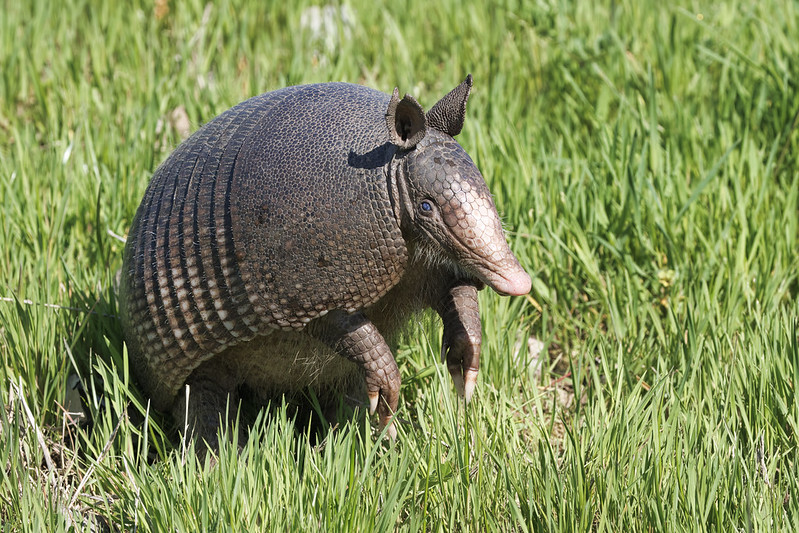While driving the auto tour road near Bakers Field, which is located at the Sequoyah National Wildlife Refuge in Oklahoma, I came across an Armadillo near the road. I was able to get a few photos from inside my pickup and also a few outside. The one thing I noticed about this Armadillo was how blue one of its eyes was. I was able to check the other eye to see if it was also blue, but that eye was missing. My guess is that this Armadillo is blind or going blind.


Despite its apparent eye condition, the Armadillo seemed healthy, as it was actively foraging for food. When approaching the Armadillo, it either saw or smelled me and reacted accordingly, indicating that it was aware of potential danger.
Armadillos are not blind, but they do have poor eyesight. They rely on their ears and noses more than their eyes to detect food or predators. (When your food is never farther away than the end of your nose, you don’t need great eyesight!) Armadillos have very small eyes that are located on the sides of their heads. This gives them a wide field of vision, but it also means that they have poor depth perception.
The Armadillo in my photo may be blind or going blind in one eye due to a condition called unilateral blindness. Unilateral blindness is when an animal loses the sight in one eye. It can be caused by a number of things, including injury, infection, or disease. If an Armadillo loses the sight in one eye, it can still survive and even thrive. However, it may have difficulty finding food and avoiding predators.

I especially like the second photo of the Armadillo because it shows the blue eye!